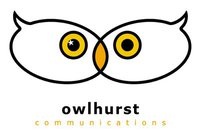 A new milestone in reading currency research will be reached this month, February 2018, when the PRC (Publisher Research Council) releases the first PAMS (Publisher Audience Measure Survey) figures. The survey, conducted by Nielsen, has as its goal, accurate measurement of reading behaviour across multiple platforms.
A new milestone in reading currency research will be reached this month, February 2018, when the PRC (Publisher Research Council) releases the first PAMS (Publisher Audience Measure Survey) figures. The survey, conducted by Nielsen, has as its goal, accurate measurement of reading behaviour across multiple platforms.
 “This new readership research of over 150 titles and websites is set to become a major source for reading currency in South Africa.” says Peter Langschmidt, consultant to the PRC. “A global search of over 40 countries was used to determine current reading research best-practice. We combined these learnings and developed our own innovative world first methodologies to ensure that PAMS is among the ‘gold standard’ of Reader Audience Measurements world-wide.”
“This new readership research of over 150 titles and websites is set to become a major source for reading currency in South Africa.” says Peter Langschmidt, consultant to the PRC. “A global search of over 40 countries was used to determine current reading research best-practice. We combined these learnings and developed our own innovative world first methodologies to ensure that PAMS is among the ‘gold standard’ of Reader Audience Measurements world-wide.”
The launch of the research will take place in Johannesburg and Cape Town.
Johannesburg
Date: 13 February 2018
Time: 15h45 for 16h00
Venue: Bryanston Country Club

Cape Town
Date: 14 February 2018
Time: 09h45 for 10h00
Venue: Kelvin Grove

The face-to-face interviews in 10 000 households were flooded to produce a sample of over 17 000 respondents and data includes cross platform reading on both paper and online.
Marketers and media planners will be glad to hear that buyer behaviour on some large categories and brands from the major Adspend categories have been included.
In designing the new reading currency, newspaper prompts have been regionalised, so as to limit respondent fatigue by excluding publications that are not sold in that area. The PRC has further addressed ‘respondent fatigue’ and resulting over-claiming by handing the tablet, containing the mastheads of the titles, to the respondent allowing them to select titles in complete privacy. Other changes and additions in the survey include ‘time spent reading’ for each publication, a new visual frequency scale based on actual publishing intervals trying to make it easier for respondents to recall their actual behaviour and also included the important category of leaflet/insert usage by readers.
“With increased time pressure on consumers, data fusion is becoming popular for media research globally. Single source, hour long studies are being rethought. The inclusion of some key brands make PAMS a perfect study to fuse with the Nielsen consumer panel and any other relevant studies,” concludes Langschmidt. “We look forward to sharing the new reading data with the industry and discussing how we will fuse PAMS with other studies later this year.”
If readers would like to attend any of the PAMS launches please email prcevents@prc.za.com
Or phone: 011 326 4041 or 082 053 03872

 As part of The Publisher Research Council’s (PRC) ongoing research into reading behaviour, the habits of those with the greatest amount of disposable income have been analysed, revealing a lucrative and engaged advertising target market.
As part of The Publisher Research Council’s (PRC) ongoing research into reading behaviour, the habits of those with the greatest amount of disposable income have been analysed, revealing a lucrative and engaged advertising target market. 